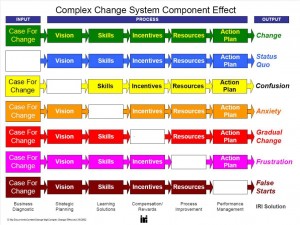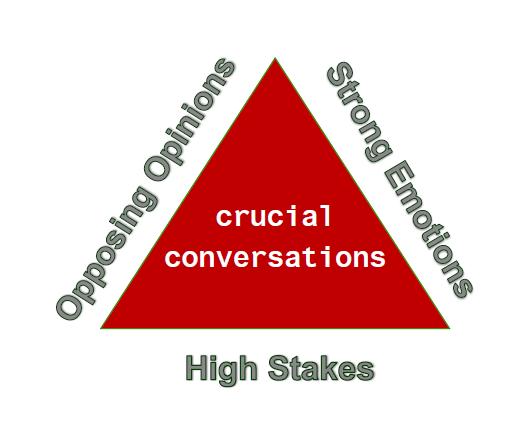Posts Tagged ‘leadership’
I don’t know about where you are in your planning, but I have to believe you are in a place where you’re starting to plan out next year. It is admissions season for us, and that means handbooks, tuition, dress codes, etc. must all be completed asap. As I look at our school handbook, I see a lot of outdated processes and requirements. There is 1 that I keep hearing about that I’m not sure what to do with and I don’t believe it is something that can be decided in a short amount of time or without quite a bit of debate.
Homework or no homework?
CNN.com posted an article in September 2015 regarding whether or not we should ban homework in schools. Mark Barnes has a book in the first wave of his Hack Learning Series titled Hacking Homework. You can find conversations all over Facebook and Twitter regarding the subject. I won’t share my opinion just yet, but I want to hear from you. Read some articles and chat with your mentors/mentees about your philosophy on homework on your campuses. Of course, much depends on grade level and subject area – or does it? It is an interesting conversation no matter which side you sit on. I can’t wait to read your thoughts.
Be sure to share on Twitter using the #SAVMP hashtag and in the title of your blog. I’m sure these will get some conversation happening! Add the hashtag #HomeworkOrNo to your tweets to keep it going!
Cheers,
Theresa
A few resources:
TED Community Discussion

Charted by Statista – original article on Forbes.com
Hello all! Happy New Year to all of you! Now that the holidays are over we can really get moving (or I can really get moving) 😉
Every year as January begins, I find myself really digging into the year. I love it because it’s like the first days of school again, except that everyone knows the routines already! They aren’t always followed, but they are known!
As a private school, our Open Houses are early in the school year as we have to plan for enrollment and tuition for our budget next year. January is full-swing Open House planning. Our Open House is February 4, and I don’t think I’ve felt so busy.
The great thing about Open House planning is that it makes me really sit back and think about marketing for my school. WHY should people send their children to my school. WHY should they pay money when they can send them to public school for free? WHAT do we have to offer? WHAT is it that makes our school so unique?
I love my building. I feel that we have built something amazing, and I am so proud of it. I have to make sure everyone else sees that, too. I have created lists, solicited suggestions and comments from parents, alumni, current students, teachers, community members. They all have something to share and every time I hear a new comment it makes my chest stick out just a little bit more.
What is it that makes YOUR school amazing? What do YOU have to offer your community? What is happening in your school that the whole world should know? Let’s take January to brainstorm with our mentor/mentee groups on what you have, and how to share it! It is ALWAYS the perfect time to share how amazing your school, teachers, and students are.
I have added a few resources that may help you in your discussions from many in my #PLN who are masters at telling their schools’ stories and branding. Happy chatting!
Cheers,
Theresa
Five Ways to Build Your School’s Instructional Brand and Connect with Families
If we don’t tell our story, someone else will.
http://talkswithteachers.com/power-branding-tony-sinanis-joe-sanfelippo/

Teacher empowerment. Student voice. These are real things. Are they happening in your building? As a leader, so you see the need for these two facets of your culture?
It is the responsibility of the leader to provide opportunities and experiences for your teachers to grow as leaders. This is more than just asking once at the beginning of the year, it’s an on going piece of what helps define the culture of a campus. It helps move your school from point A to point B, all fueled by the power of passionately involved staff members.
Have you ever been asked to contribute to a district initiative? When that initiative rolls, out, and you present it your staff, there is a completely different feel to how you “sell” it. You are more invested. You want to see it be successful because you played a part in its creation. The same would hold true for the teachers that you involve in your campus decisions.
Collaborative practices amongst your staff allow for a collective growth, which will also have a direct impact on your students. They have the chance to learn from each other, see different perspectives, and have the chance to share their successes. This builds team morale, as well as allow best practices to be shared and discussed. Highlights from these “share sessions” could become the template for your next staff development!
There was a teacher that I worked with that had a….negative….reputation on our staff. She always asked a million questions, pointed out all of the flaws in any of our plans, and was generally thought of to be a pain. It soon became apparent that I loved having her in meetings!! She brought up every possible way things could go wrong, which allowed me to put a plan in place where it wouldn’t happen. She was detail oriented, where I was more of a big picture girl. Once she realized how truly important I thought her opinion was, she made a concentrated effort to not present her thoughts so antagonistically, which in turn changed the way our staff thought of her.
What are ways that you are INTENTIONAL in allowing your staff to feel empowered? Share your best thoughts here, and we will all benefit from collective empowerment!
Sharingly,
Amber

Hi stranger friends!
I was Voxing with George this morning, 🙂 and we were lamenting how life just exploded for us both this spring. He was busy getting engaged and we all know how time consuming wedding planning can be, 🙂 Add that to an influx of speaking engagements, he’s been in high demand! Not just speaking locally either…the man has been ALL over. Meanwhile, I’ve been busy getting a new job in a neighboring district and had an award thrown in, just for good measure.
Excuses? Possibly. The reality of our admin worlds? Definitely.
There isn’t a calm “season” in education, especially when you are trying to live to the fullest outside of your building. Recognizing the ebbs and flows of what we do is important to recognize as you contemplate leadership. We talk about modeling what we want to see from our staff, and this balance counts too! Administrators have to set boundaries and limits. The purpose of leading is to show through your walk and talk, that you are genuine. Being busy, and letting things slide at times, (gulp.) is a reality. It’s if and how you handle that slide that speaks loudest to your staff.

That being said, it’s the end of the school year. It’s time for EOY procedures, it’s time for making plans for the next year, it’s time for goodbyes. Thank you for joining us on this SAVMP adventure. I’m going to let George close us out proper, but I wanted to remind you to value the connections you have made through this program. Reach out to me, or George, or your mentee’s/mentor’s, if you ever have a need.
Good luck and happy summer!
Amber

Recently I took part in a leadership activity that aptly illustrated the importance of “clear” communication. The group was partnered up. One partner had a picture of a figure, the other a blank piece of paper. While sitting back to back, the person with the figure attempted to explain what the picture looked like while the other partner drew. It is an understatement to say that at the end of the activity, the pictures didn’t typically match.
As a leader it is up to you to clearly define not only your vision, but your expectations. If they are not so clearly stated that anyone can read, follow or understand, the onus falls on you, as the leader to clarify. If your expectation is that parents feel welcome when they walk in the doors, what are the look for’s that indicate that is happening? Have you shared those with your staff? What if your passion is that every student feels heard? What does that actually LOOK like in a classroom? Are your teachers aware? the counselor? Many leaders in the corporate world now understand that clear, two-way communication is vital to the success of any organization and its leaders. Jim Collins, in his best selling book about making organizations better, Good to Great, writes, “A primary task in taking a company [read: school or school system] from good to great is to create a culture wherein people have a tremendous opportunity to be heard and, ultimately, for the truth to be heard.” (2001, p. 88)
Students learn better when adults communicate well. The need for good communication in our schools is great because the needs of our students are great. Students matter.
The spring is the downhill slide in education. We’re moving towards the end of the 2013-2014 year, and plans for 2014-2015 are on the horizon. Take advantage of what’s left of this semester to evaluate just how clear is your “communication”. Is there something that you can share with your group that didn’t go as expected, because of a communication miscue? or a success?
Have a GREAT week!
Amber
In this hangout instructional leaders Jason Markey, Melissa Emler, Tony Sinanis, & Zach Snow discuss the importance of student voice and how to harness the power that passionate students are willing to share…if we listen.

We’ve been discussing the “change matrix” within a leadership group in my district.

What’s in it for me? When it comes to change, this may be one of the most frequently used phrases, both vocalized and internalized. Too many times we miss out on great opportunities because we have the wrong mindset. At what point in a teacher’s career does the focus shift from doing what is best for students to, “let’s do what’s best for me.” Our systems are built around the convenience of the adults and not necessarily for the benefit of the students.
I know that some of you may disagree, but where’s your evidence?
1). Master schedule is based on adult’s preference.
2). Teachers threaten to quit or transfer if they do not get the classroom or conference that they want.
3.) Knowing that some teachers lessons aren’t up to par, but not wanting to rock the status quo.
4.) Looking the other way at worksheet driven classrooms because “the test scores are fine.”
Educators need to be redirected back to the purpose of our profession – doing what’s best for students’ success. Our current practices may give us gradual change, but not the change you need to truly make a difference.
We must provide incentives, which doesn’t always mean money. Knowing how important the students are to both their own success and to ours, what can we do, incentive-wise, to get teachers to focus on what’s best for students? How do you steer the conversations back to what’s best for students? Are you a students’ principal?
(Thanks to Dr. Gerald Hudson for the starting point here, :))
Amber

 Fearless. Courageous. Thoughtful. Visionary. What are some adjectives you think of when you think of the word “leader”?
Fearless. Courageous. Thoughtful. Visionary. What are some adjectives you think of when you think of the word “leader”?
Does the word “delegator” come to mind? It is a true art form, the ability to wisely and effectively delegate. It is a quality far more quiet than others, and yet can be one of the most crucial to a leader’s success. A principal who insists on maintaining all control and refuses to allow other’s to contribute or feel ownership of a campuses goals is missing the forest for the trees.
When I think of the leader who’s style I would most like to emulate, I think of someone who always empowered me to take on more, who encouraged me to believe in myself and gave me the opportunities to prove it. I was given extra after extra, and the encouragement to believe that not only could I handle it, but I would be able to handle it well. It truly molded me into who I am today, and even better, she STILL finds opportunities to build me up.
Tight fisted leadership doesn’t allow people to get on board. It is hard for someone to feel invested in a direction if they feel as if they are an outsider looking in. Delegating allows your team to take control, it empowers them to want to be better, to make ALL of you better. And as a leader, isn’t that what you want? Managers come and go, but leaders build other leaders and are never forgotten.
You are where you are for a reason. You are the LEAD learner, the INSTRUCTIONAL leader. You can spend 20 minutes every day doing something your secretary should be doing, which equates equates into 86 hours of doing that task during the next five years. Which is a more effective use of your time?
Obviously, this begins with smart hiring and being surrounded by people who you trust. If you find yourself saying, “So & so can’t handle that…so & so isn’t responsible enough for that.”, you may want to start with evaluating who is on your team. Find the “power points” on your campus, make sure they understand and believe in your vision, and start delegating. I had a conversation recently with a former custodian who worked in the building where I taught. He has since been promoted to custodial supervisor, and I love getting to catch up with him. He asked me who my heavy hitters were, and when I looked puzzled, gave me the most genuine compliment ever.
“Amber, you know you were the one we could all go to when we needed to get something done. You were that person on the staff, and everyone knew it. You’ve just got to find those power points on your campus now.”
3 easy ways to get started…
- Choose people who don’t need to be micromanaged. Make sure they are on board and up for the task.
- Ensure that your expectations are understood. Be clear if your goals and what the final product should look like.
- Follow up, check in, touch base…delegating doesn’t mean not following up! Give plenty of praise and credit where it is due.
By not delegating, you may give off the impression that you don’t think those around you are up for the task. Successful delegation of authority as a leadership style takes time and energy, but it’s worth the time and energy build other leaders. This week, have a conversation and decide who YOU can empower. Delegate!
Have a great week!
Amber

“We succeed or fail one conversation at a time.”
Hard conversations are never easy. Regardless of how “right” they may be, it doesn’t make it any easier on the person giving it, or the person receiving it. It can be one of the most difficult parts of an administrators job, and can easily turn into a disaster. When problems arise, in the worst companies people will withdraw into silence. In the best companies, people will hold a crucial confrontation, face to face and in the moment. And they’ll hold it well.
Dialogue example – Steps to Mastering a Crucial Conversation
Before embarking on a critical, or crucial, conversation…ask yourself these three questions:
- How important is it for the students or staff that I bring this up? Is it a “me” thing or is it an”impacting student success” thing?
- Is what is going on in the classroom unsafe or damaging to students or staff?
- What would happen if I didn’t have the conversation?
Other tips to keep in mind:
- Have a plan. Who will be involved in the conversation? Where will it take place? When will it happen? Will it be documented?
- What should your role be? Remember to listen to all parties involved. Be genuine in your efforts to resolve the issue at hand. Find a solution that fits. Beware of hidden agendas.
- You are the LEADER. It all begins and ends with you. The tone, intent, and follow through are all going to depend on how you handle the situation.
There will be a google hangout this week on “Critical Conversations”, stay tuned! (I will update this post when time and guests are decided!)
For your prompt for this week, blog about how you handle crucial conversations and at what point you step in to have them. What advice would you give to a new administrator in having to have a crucial, or fierce, conversation?
Have a great week, and where ever you are, stay warm!
Amber
Resources used and for more information:
Crucial Conversations: Tools for talking when stakes are high Kerry Patterson, Joseph Grenny, Ron McMillan, Al Switzler
Crucial Accountability: Tools for Resolving Violated Expectations, Broken Commitments, and Bad Behavior
Kerry Patterson, Joseph Grenny, David Maxfield, Ron McMillan, Al Switzler
Fierce Conversations: Achieving Success at Work and in Life, One Conversation at a Time
Susan Scott
Critical Conversations for Dummies
Dr. Christina Schlachter
“Leaders don’t create followers, they create more leaders.” — Tom Peters
One of the best things that I had as a teacher was a principal that believed in me. I remember having a conversation with her about technology in school, and she asked me what I thought the budget should be for the year and what we should look at purchasing. I was perplexed by the question as this was traditionally the principal’s call and she looked at me and said, “I hired you for your knowledge in this area. Why would I make decisions for something that I do not know much about? I trust you.”
After that, I would have done anything for that principal (and still do as she is still my boss as the division level). When you give over power and responsibility it says one thing, but when you say where people excel and build upon it, that is also an important trait.
For this week’s topic, I want you to think about how you develop leadership in your buildings/work. How do you promote others to lead? This is important to focus on whether we try to “control” our people, or “unleash” their talents. What are some of the things that you do that make this happen?
Have a great week!!!
Here is an interesting article on “Leadership Development” that may spark some ideas. – The #1 Reason Leadership Development Fails









